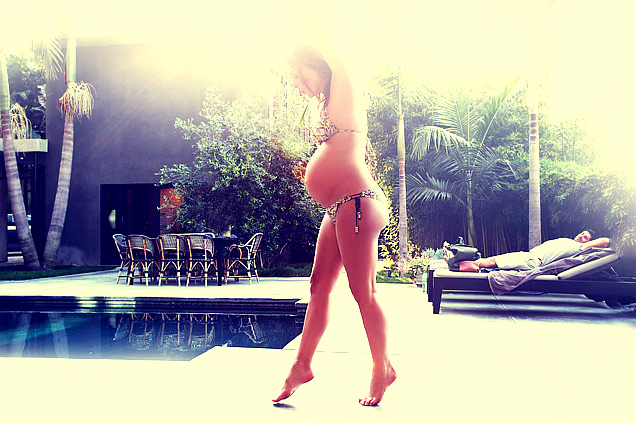Goodbye to running, tennis, horseback riding and Zumba… Pregnancy requires you to be more gentle with your body than ever before. More and more doctors are recommending yoga for pregnant women – a practice that has the benefit of combining muscle fortification, relaxation and preparation for childbirth. Les Louves received some tips and explanations from the leading experts in prenatal yoga.
Let’s start by dispelling this myth: prenatal yoga does not just benefit the mother. Breathing from your belly benefits the baby, too, and evidence shows that Iyengar newborns (babies whose mothers practiced Iyengar yoga during pregnancy) are often born with open eyes and a more relaxed and Zen demeanor… What’s good for mum is good for baby.
When to Start?
Experienced yogis can continue traditional yoga through the start of their second trimester. Beginners may start in the first trimester, but be sure your instructor is well-trained and knows which precautions to take. If possible, start doing yoga before pregnancy to prepare your body for this impending havoc. In the Iyengar method, prenatal yoga must be preceded by at least a few months of practice.
Improving Flexibility in Your Pelvis and Back
“Prenatal” yoga is a more gentle version of traditional yoga that focuses on opening the hips and pelvis, relaxing the stomach and strengthening the back in preparation for supporting the baby and, eventually, giving birth. It avoids ab work and muscle-tightening, and should you have any back problems, prenatal yoga will help ease this discomfort. It is mostly practiced sitting down or on your back, with a few twisting and inverted positions to help regulate your glandular and hormonal systems and aid your nervous system.
More Comfort, Less Pain at Each Stage
Throughout her pregnancy, a yogi mum will experience less stress, having learned to relax and find comfort in positions that benefit both herself and the baby.
In the third trimester, prenatal yoga helps improve sleep, as women can more easily find poses that are comfortable for her and for the fetus.
On delivery day, breathing exercises will help to mitigate the pain of contractions. Knowing how to find relaxing positions and safely stretch your muscles and tendons will also help reduce the pain of opening your hips and pelvis.
After giving birth, the work you’ve already done to fortify your muscles will allow you to rediscover the healthy harmony of your body much more quickly.
Good “Samskara” for the Baby
In the womb, the baby loves movement – it finds comfort in your breathing and the beating of your heart. During prenatal yoga exercises, baby feels rocked, massaged and soothed by the mother’s movements and deep breaths.
Indian tradition also suggests that the joy and peace yoga brings to one’s body transfers to the fetus, impacting and benefiting him or her for life – an idea called “samskara.”
The Professionals’ Thoughts
“In our society, and in our daily lives, we are not as connected to our bodies as pregnancy requires [us to be]. This is a very instinctual time in which the importance of listening to our bodies takes over. Yoga helps us develop this bodily awareness,” Mariana, pre- and post-natal yoga instructor at Centre Rasa Yoga Rive Gauche in Paris.
“The [key] to yoga is bringing order to our bodies’ natural movements and regulating our hormonal cycles. It helps improve movement in each part of the body – especially the abdomen – which significantly improves the comfort of the mother, and therefore the fetus,” Corine Biria, at Centre Yoga Iyengar in Paris.
M. D.
Translated by G. W.
See also on Les Louves
L’Essentiel Paris : A Cosy Apartment Dedicated to Moms Wellbeing
Our Secrets for Avoiding Heavy Legs during Pregnancy

